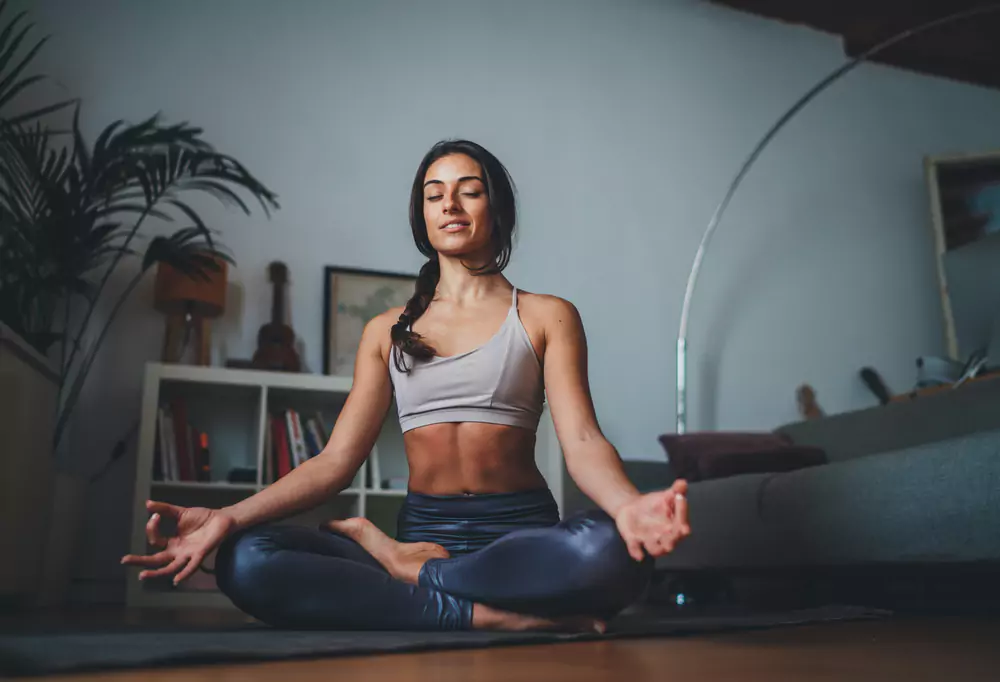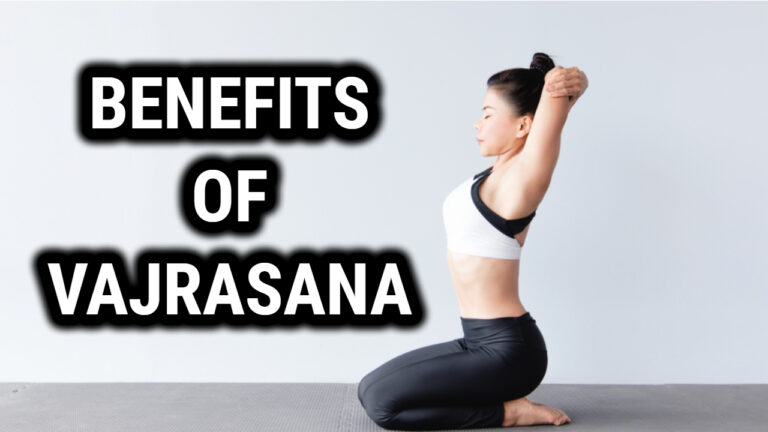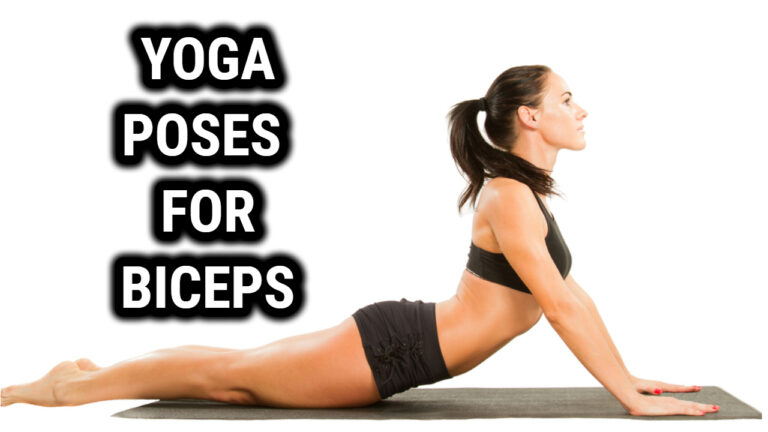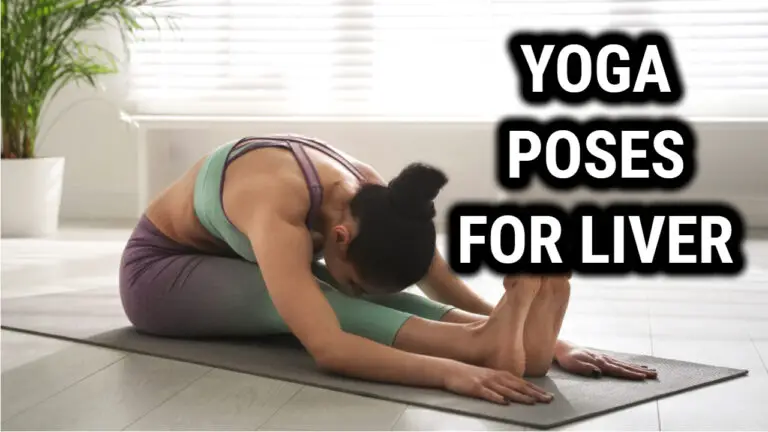Top Yoga Poses That Boosts Energy And Motivation Within You

Yoga is a physical practice that has been used for centuries to increase energy and motivation. It is a form of exercise that helps to improve physical, mental, and emotional wellbeing. Here we will discuss some ways on finding energy on the mat.
This mindful journey encourages practitioners to start in a fetal position and focus on the breath and embrace the present moment. The practice includes knee circles, Baby Cobras, Airplane Arms, Cat-Cow poses, Downward Facing Dog, Standing Poses, Thread the Needle, and Extended Child’s Pose. Each pose helps to stretch and strengthen the body, while also helping to fire up the core and build strength and stability.
The practice ends with a round of twists to refresh the system and kick feet for stimulation. Through this practice, practitioners can find energy and motivation to continue practicing and showing up.
Key Takeaways
- Yoga practice helps in finding motivation and energy on the mat.
- Focusing on the breath and embracing the present moment leads to building motivation.
- Various poses and movements in yoga sequence stretch and strengthen the body.
- Mindfulness and emphasis on breath are important aspects of yoga practice.
Fetal Position Start
To begin the practice, one should start in a fetal position on the left side, using the left arm as a pillow.
This position is beneficial since it allows the body to relax and open up, allowing for a deeper exploration of breathwork.
Closing the eyes and focusing on the breath encourages the individual to embrace the present moment and find stillness within.
This stillness is essential to the practice of yoga, as it allows for the present moment to lead to the next, building momentum and motivation.
In addition to the mental benefits, the fetal position is also beneficial in providing physical relief, allowing the individual to rest and relax before beginning more dynamic movements.
Knee Circles
Moving the right knee in circles helps to engage the right glute. This can be beneficial for exploring knee flexibility and stimulating the body.
By performing knee circles, one can experience the following benefits:nn1. Increased blood flow and circulation
- Enhanced muscular strength and range of motion
- Improved posture and coordination
Knee circles are an effective way to improve mobility and flexibility of the joints, as well as increase the strength of the muscles surrounding the knee. This exercise can also help to improve the posture and coordination of the body.
Furthermore, by stimulating the muscles and increasing the blood flow, one can experience a sense of energy and motivation.
Baby Cobras
Baby Cobras are a yoga pose that can help to increase the strength and flexibility of the spine. It is done by lying face down on the floor with the arms extended back and the palms down.
Slowly lift the head, chest, and arms off the floor while tucking the chin to the chest.
Benefits of baby cobras include improved posture, increased energy, and improved breathing. It is also a good way to warm up the body before performing more challenging poses.
Modifications for baby cobras can include placing a pillow or blanket under the chest for extra support, or using a yoga strap to help the arms extend further away from the body. By using these modifications, the pose can be adapted to fit different skill levels.
Airplane Arms
Airplane Arms is an exercise focused on shoulder engagement and stability. This pose requires arm strength and helps to open up the shoulders. It is a great way to build stability and flexibility. Benefits include:
- Improved shoulder stability
- Increased arm strength
- Increased flexibility
- Improved posture
- Improved focus and awareness
To practice Airplane Arms, begin in a standing position with the feet hip-width apart. Reach the arms out to the side at shoulder height, palms facing down. As you inhale, extend the arms further away from the body and reach out through the fingertips. As you exhale, draw the arms back in and press the palms together at the heart. Continue to practice this pose, feeling the shoulder blades drawing together and the arms lengthening.
Cat-Cow Poses
Cat-Cow poses are a series of postures that involve the movement of the spine in a rhythmic flow. This sequence helps to explore spinal flexibility, while activating the core muscles and abdominal organs.
These poses are beneficial for both physical and mental health. The Benefits of Cat Cow poses include improved posture, increased muscle strength and flexibility, and improved circulation. It also helps to reduce stress, fatigue, and anxiety.
Practicing Cat-Cow poses correctly requires an awareness of the body and the breath. Focusing on the breath helps to deepen the pose, while allowing the body to relax into the movement. With each inhalation, the belly should move towards the spine, while with each exhalation, the spine should move in a wave-like motion. Moving in a slow and gentle manner allows the spine to move more freely and deeply.
The practice of Cat-Cow poses helps to maintain flexibility and mobility in the spine, while promoting balance and wellbeing.
Thread the Needle
Thread the Needle is a yoga pose which involves stretching the shoulder, chest, and arms. It is done by transitioning to all fours from Extended Child’s Pose, then threading the right arm under the left, with the arm and shoulder resting on the mat.
This pose provides a deep hip opening and shoulder stretch. It can be done on either side, and it can be modified by placing a block underneath the shoulder for a gentler pose. It is important to keep the hips level while in this pose, and to breathe deeply and slowly to relax the shoulder and chest.
Thread the Needle is an excellent pose for relieving tension in the upper body and increasing flexibility.
Downward Facing Dog
Downward Facing Dog is an active yoga pose that engages the entire body and stretches the muscles of the shoulders, arms, and legs. It is a foundational pose in many yoga practices and provides numerous benefits to the physical body.
Exploring the benefits of Downward Facing Dog pose, practitioners can expect to increase their flexibility, strength, and range of motion. Additionally, the pose aids in relieving stress and tension, while boosting circulation.
Deepening the stretch in Downward Facing Dog requires slight adjustments to the alignment of the body, such as lengthening the spine, pressing the palms into the mat, and drawing the shoulder blades away from the ears. As the pose is held, the body is encouraged to relax into the natural alignment, allowing for a deeper stretch of the muscles.
With regular practice, the benefits of Downward Facing Dog can be fully realized.
Standing Poses
Standing poses are an important part of a yoga practice, offering practitioners the opportunity to develop strength, stability and flexibility.
The Curtsy pose is a hip opener, which stimulates the low back, waistline and shoulder muscles.
The Crescent Lunge pose is a standing posture, providing an uplifting experience for the body as well as strengthening the legs and engaging the abdominal muscles.
Warrior II pose is an energizing pose which increases strength and stability.
Toe-heel movement, when performed slowly, can be used to transition into a standing posture.
Lastly, a Forward Fold and Plank Pose can be used to round out the standing poses, providing an opportunity to wring out tension and stimulate the body.
Frequently Asked Questions
What other types of yoga can I practice?
Yoga is an ancient practice that offers various styles and benefits for those who practice. Commonly known styles include Hatha, Vinyasa, and Kundalini, while meditation can offer additional benefits. Other styles of yoga include Ashtanga, Bikram, and Iyengar.
What are the benefits of practicing yoga?
Yoga is a holistic practice that offers many benefits, such as mental clarity, stress relief, improved flexibility and strength, greater self-awareness, and enhanced concentration.
How can I modify poses to fit my fitness level?
Modifying poses to fit a fitness level can be done by using flow yoga and meditation techniques. Regular practice will help one progress and adjust poses accordingly. This can help to find the right level of intensity for each individual’s fitness level.
What other techniques can I use to relax my body and mind?
Meditation techniques and breathing exercises can be used to relax the body and mind. These activities can help to reduce stress and tension, promote relaxation, and increase the awareness of the present moment.
How often should I practice yoga to get the best results?
Yoga practice frequency depends on individual goals and preferences, as different styles of yoga offer various benefits. Generally, it is recommended to practice yoga at least twice a week to experience the full effects of meditation and other yoga benefits.






